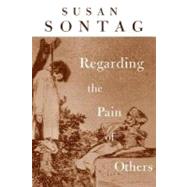Regarding the Pain of Others

Regarding the Pain of Others
- ISBN 13:
9780374248581
- ISBN 10:
0374248583
- Format: Hardcover
- Copyright: 03/15/2003
- Publisher: Farrar, Straus and Giroux
- Newer Edition
Rent
Sorry, this item is currently unavailable.



